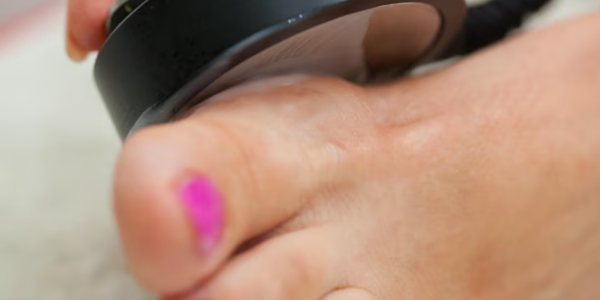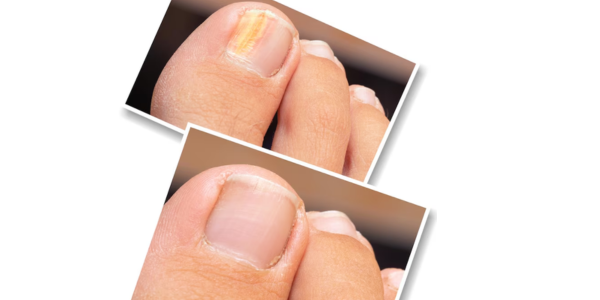Effective Toenail Fungus Treatment
Effective Toenail Fungus Treatment: A Comprehensive Guide

Toenail fungus, also known as onychomycosis, is a common yet often frustrating condition that can cause pain, embarrassment, and difficulty in maintaining proper foot hygiene.
It starts as a small discoloration or thickening under the nail and, if left untreated, can lead to severe infection, nail damage, and even spreading to other areas.
The good news is that toenail fungus is treatable, and there are various approaches to managing and curing this persistent infection.
In this comprehensive guide, we will explore the most effective toenail fungus treatments, including both traditional and innovative options.
Whether you’re seeking over-the-counter remedies or looking for advanced, professional treatments, we’ve got you covered. Our goal is to help you understand the various options, so you can make an informed decision about the best treatment for your situation.
What Is Toenail Fungus?
Toenail fungus is a fungal infection that typically begins at the tip of the nail and spreads inward. It can cause the nail to become discolored, thickened, and brittle, often leading to a foul odor.
In some cases, the infection can also cause pain or tenderness around the nail. This condition is often caused by dermatophytes, which are fungi that thrive in warm, moist environments, such as the insides of shoes, public showers, and swimming pools.
Toenail fungus is contagious, so it’s important to take steps to prevent its spread. Individuals with compromised immune systems, diabetes, or poor circulation are more susceptible to toenail fungal infections.
However, anyone can get toenail fungus, especially if they have exposed their feet to environments where fungi thrive.
Symptoms of Toenail Fungus
Toenail fungus may not always be noticeable at first, but there are several symptoms to watch for:
- Discoloration: The nail may start to turn white, yellow, or brown.
- Thickening of the Nail: The nail may become thicker and harder to trim.
- Crumbly or Brittle Nails: The nail may become fragile, leading to crumbling at the edges.
- Distorted Shape: The nail may begin to lose its normal shape, becoming distorted or misshapen.
- Pain or Tenderness: In severe cases, toenail fungus can cause pain, especially if the infection spreads to the nail bed or the skin around the nail.
If you notice any of these symptoms, it’s essential to start treatment as soon as possible to prevent further complications.
Effective Toenail Fungus Treatments
There are several methods for treating toenail fungus, ranging from over-the-counter solutions to professional medical treatments.
The effectiveness of each method depends on factors like the severity of the infection, how long the fungus has been present, and your overall health. Below, we’ll discuss some of the most effective toenail fungus treatments available today.
1. Topical Antifungal Treatments
Topical antifungal treatments are often the first line of defense against toenail fungus. These medications are applied directly to the affected area and work by killing the fungi or preventing their growth.
Over-the-counter (OTC) antifungals are commonly available in the form of creams, gels, and nail lacquers.
- Antifungal Nail Lacquers: One of the most popular OTC treatments is antifungal nail lacquer, such as ciclopirox (Penlac) or amorolfine. These lacquers are applied directly to the nail and nail bed and can be used once or twice a day for several weeks. While effective, they require consistency and can take months to show visible results.
- Topical Antifungal Creams and Ointments: Another option includes antifungal creams like clotrimazole, terbinafine, and miconazole. These creams are typically applied to the infected nail and surrounding skin. While these creams are effective in treating superficial fungal infections, they may not reach the deeper layers of the nail where the infection often resides.
Pros:
- Non-invasive and easy to use.
- Available without a prescription.
- Minimal side effects.
Cons:
- Can take several months to see results.
- May not work for severe or deep infections.
- Requires consistent application.
2. Oral Antifungal Medications
For more severe cases of toenail fungus or when topical treatments are ineffective, oral antifungal medications may be necessary.
These medications work by targeting the fungus from within the body, offering a more comprehensive approach to eliminating the infection. The most commonly prescribed oral antifungals are:
- Terbinafine (Lamisil): Terbinafine is one of the most commonly prescribed oral antifungal medications. It works by stopping the fungus from producing ergosterol, a substance that is essential for its cell membrane. This disrupts the fungal cells and leads to their death.
- Itraconazole (Sporanox): Itraconazole works in a similar manner to terbinafine but is often used for individuals who cannot tolerate terbinafine or have specific types of fungal infections.
- Fluconazole (Diflucan): Fluconazole is another oral antifungal medication that may be prescribed in certain cases, though it’s typically less effective than terbinafine or itraconazole.
Pros:
- More effective for severe or deeply embedded fungal infections.
- Works from the inside out, targeting the root cause of the infection.
Cons:
- Potential for side effects, including liver damage or gastrointestinal issues.
- Requires a prescription from a healthcare provider.
- May interact with other medications you’re taking.
3. Laser Therapy for Toenail Fungus
Laser therapy is an advanced, non-invasive treatment option that has gained popularity for its ability to treat toenail fungus effectively.
The laser works by emitting light at a specific wavelength that targets and destroys the fungal cells under the nail without causing damage to surrounding tissue.
Laser treatment has been shown to be effective in clearing fungal infections in a relatively short period of time, often with minimal discomfort.
There are different types of lasers used for treating toenail fungus, including Nd:YAG lasers and low-level laser therapy (LLLT). These lasers work by penetrating the nail and surrounding tissue, where they heat the infected area and kill the fungi.
Pros:
- Quick and non-invasive treatment.
- Minimal side effects and no recovery time.
- Suitable for patients with severe or persistent infections.
Cons:
- Expensive, often not covered by insurance.
- May require multiple sessions for optimal results.
- Not always effective for deep or chronic infections.
4. Home Remedies and Natural Treatments
Many people seek natural remedies to treat toenail fungus, either alone or in combination with other treatments.
While home remedies may not be as effective as prescription treatments, they can be a good option for mild infections or as a complementary treatment.
Some popular natural treatments include:
- Tea Tree Oil: Known for its antifungal and antibacterial properties, tea tree oil can be applied directly to the affected nail. Simply soak a cotton ball in the oil and apply it to the nail twice a day.
- Apple Cider Vinegar: Apple cider vinegar is believed to have antifungal properties that can help treat toenail fungus. Soak your feet in a mixture of apple cider vinegar and water for 15–20 minutes a day.
- Vicks VapoRub: Vicks VapoRub is a common home remedy for toenail fungus. It contains menthol and eucalyptus oil, both of which are thought to have antifungal properties. Apply it directly to the infected nail.
Pros:
- Inexpensive and easy to find.
- Minimal side effects.
- Can be used alongside other treatments.
Cons:
- Effectiveness is limited and not supported by strong clinical evidence.
- May not be as powerful as prescription medications.

5. Surgical Treatment
In rare cases, when all other treatments have failed or when the infection is particularly severe, surgical removal of the affected toenail may be necessary.
The procedure is typically performed under local anesthesia, and the infected nail is removed to allow for new, healthy nail growth.
This treatment is usually reserved for cases where the infection has caused significant damage to the nail and surrounding tissue.
Pros:
- Can provide immediate relief and remove the infected nail.
- Effective for severe cases of toenail fungus.
Cons:
- Invasive and requires recovery time.
- Risk of complications, such as infection or scarring.
- Expensive and typically only used as a last resort.
Prevention of Toenail Fungus
Once you’ve successfully treated toenail fungus, it’s essential to take steps to prevent future infections. Here are some preventive measures you can take:
- Maintain good foot hygiene: Wash and dry your feet thoroughly every day, paying special attention to the areas between your toes.
- Wear breathable footwear: Choose shoes made of materials that allow air circulation and avoid tight, damp shoes that can create an ideal environment for fungi to grow.
- Avoid walking barefoot in public areas: Fungi thrive in warm, moist environments, so always wear shoes in public showers, locker rooms, and swimming pools.
- Trim nails regularly: Keep your toenails trimmed and clean to reduce the risk of infection.
- Use antifungal powders or sprays: Consider using antifungal foot powder or spray to reduce moisture and prevent fungal growth.
Conclusion
Toenail fungus is a common condition that can be effectively treated with the right approach. Whether you choose topical treatments, oral medications, laser therapy, or natural remedies, there are several effective toenail fungus treatments available.
The key is to start treatment early and stay consistent. If your infection is severe or doesn’t improve with over-the-counter treatments, it’s essential to consult a healthcare professional for more advanced treatment options.
By understanding the various treatments and taking steps to prevent future infections, you can achieve healthy, fungus-free nails. Remember, with the right care, toenail fungus is manageable, and you can restore your feet to their healthy, beautiful state.

.